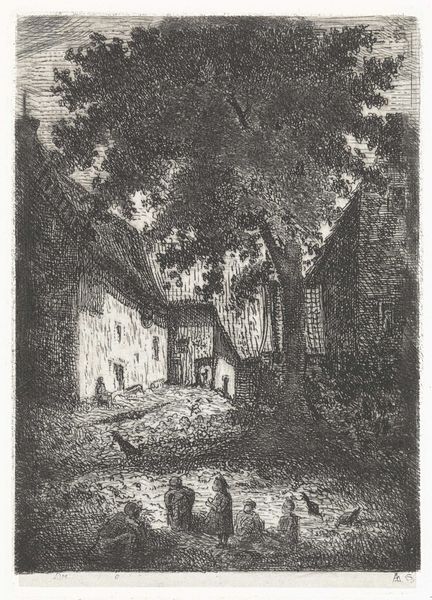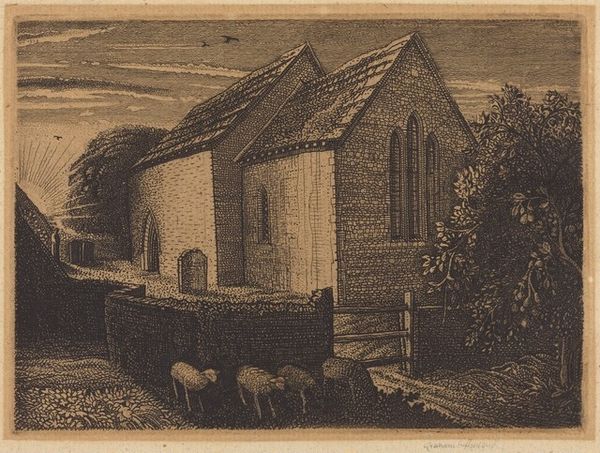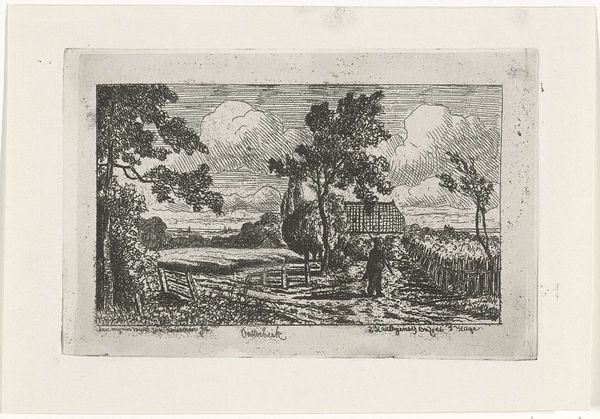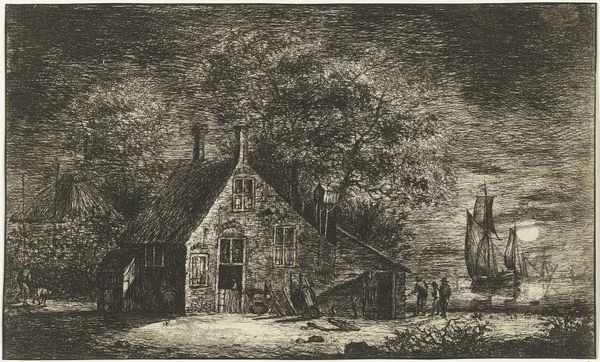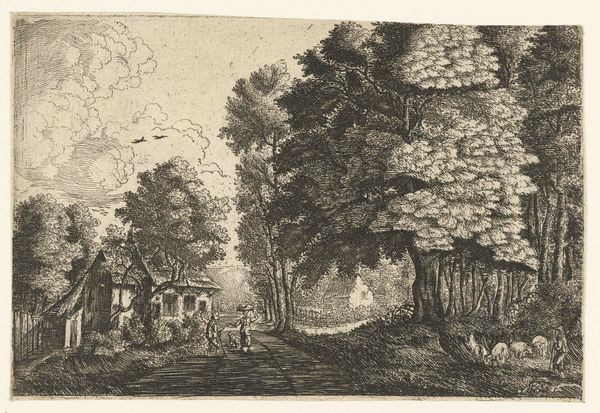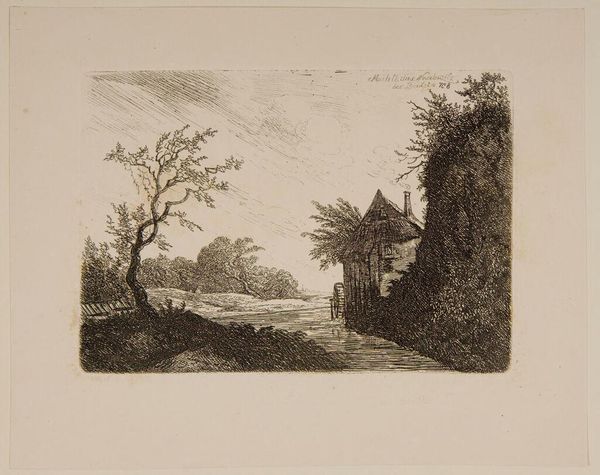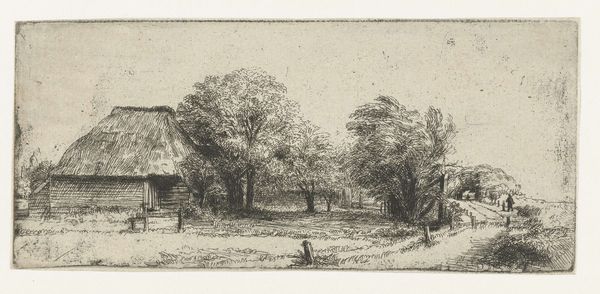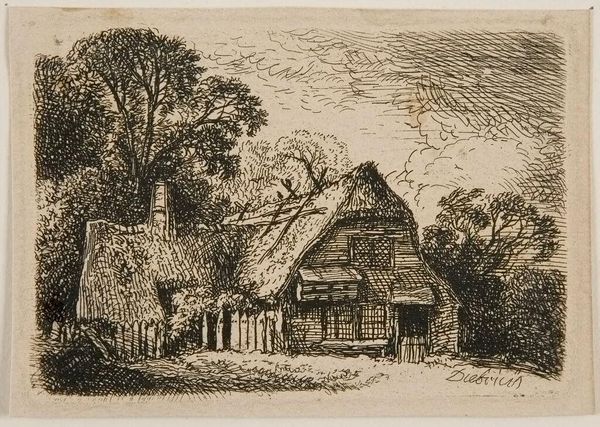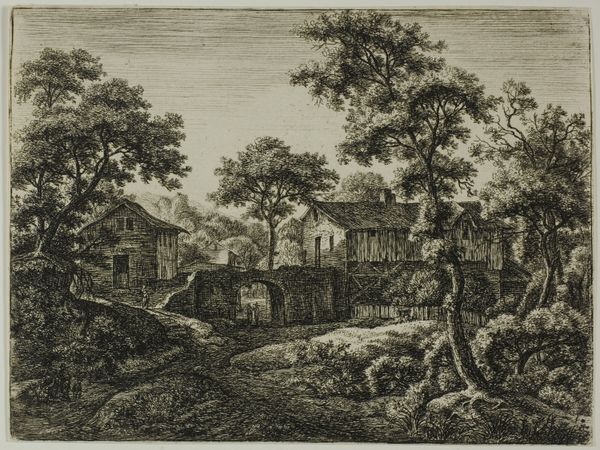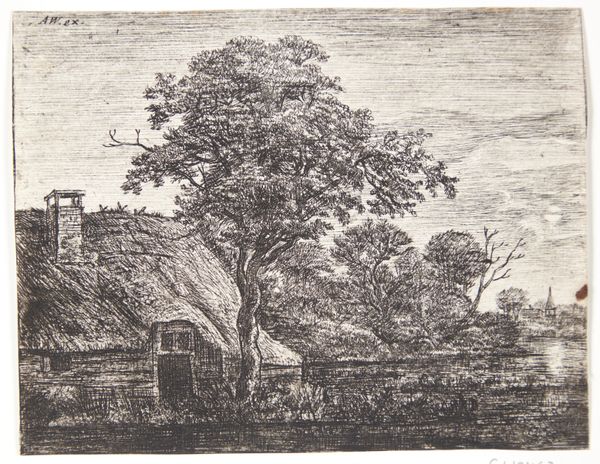
print, etching, ink
# print
#
pen sketch
#
etching
#
pencil sketch
#
landscape
#
ink
#
realism
Dimensions: plate: 12.1 × 18 cm (4 3/4 × 7 1/16 in.) sheet: 17.5 × 21.9 cm (6 7/8 × 8 5/8 in.)
Copyright: National Gallery of Art: CC0 1.0
Curator: This piece immediately evokes a memory for me…of being a kid hiding under my grandma's porch, waiting for the adults to quit their endless discussions and send us off for ice cream. There’s this sheltered, cozy, yet slightly menacing quality about the density of textures. Editor: Indeed. Here we have "St. Mary's Hatch", a 1926 etching by Graham Sutherland. Look closely at the sheer layering of marks; it’s achieved in ink on paper. Sutherland is primarily known for his paintings and prints depicting landscapes, and, I must say, the symbolism here resonates strongly with broader debates of national identity after the trauma of the Great War. Curator: I like how you took that to a darker place immediately, because you're right... I definitely think of fairy tales—the menacing woods, something gothic and cloaked! Do you think he was aware of how it came off as "menacing" to some viewers? Editor: The rural setting is seemingly idyllic, right? But think of how idealized pastoral landscapes in art can whitewash historical complexities. St. Mary’s likely has its own history tied to power structures, be they ecclesiastical or feudal. What appears timeless to us is situated within a socio-economic history! So Sutherland could be showing it how it looks now, compared to how it looked ages ago. Curator: Yeah! Because that thatch roof is immaculate... you are 100 percent right! Someone takes care of the thatch! And if there’s upkeep, someone definitely controls it, so this is not necessarily free…it is picturesque and idyllic, like a scene you can put on a puzzle, but somebody must be maintaining this idyllic world. I still find myself gravitating back to this lone figure. There is a stoic quality to him... Editor: I’m drawn to how Sutherland positions the natural world front and center. That ancient, embracing tree acts as both witness and protector of all below, of the people connected to this rural space, as much as they are being surveyed or categorized. In art, and in our social and political realities too, such framings really do matter. Curator: Well, that adds another layer for me to ponder, so thank you! It is one of those pieces that you could view and discuss over a bottle of wine or five. Editor: Absolutely. Hopefully our dialogue has helped our listeners approach landscape, art, and its relationship to history with fresh eyes.
Comments
No comments
Be the first to comment and join the conversation on the ultimate creative platform.
